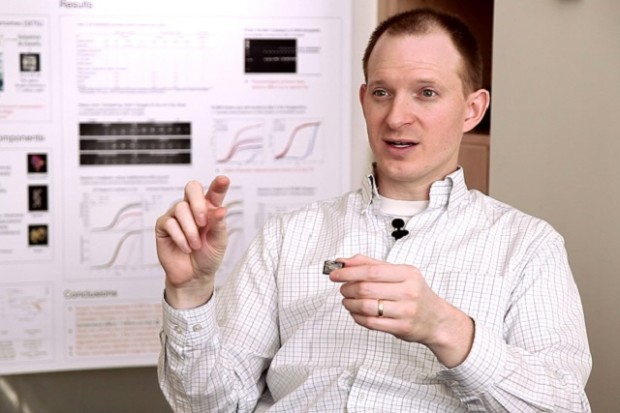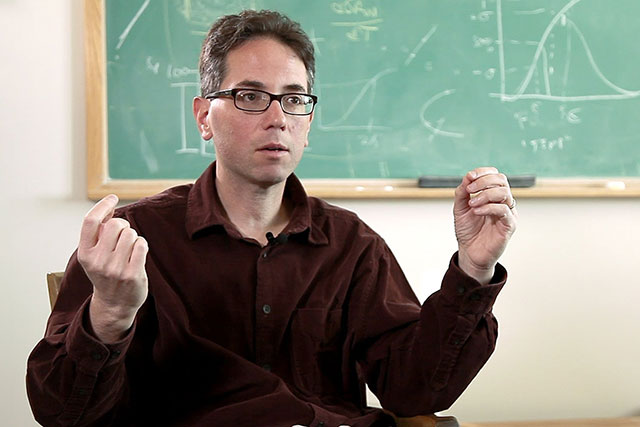Search for Life in Solar Vicinity
Astronomer Jean-Loup Bertaux on the Doppler Shift, HARPS-spectrograph, and the habitable zone.
videos | September 4, 2015
How was the first extrasolar planet detected? What should we look for if we want to find intelligent life in cosmos? What is the transit method? These and other questions are answered by the Director of research at LATMOS ( France) Jean-Loup Bertaux.
The topic of existing of other being, thinking being, outside the Earth, is a long-standing problem and historically it has been advocated many times. In particular, by Giordano Bruno in 1600. In fact, he was the first guy, Giordano Bruno, to understand that the stars were objects exactly like the Sun. So he thought these stars are like the Sun, but further out. And immediately he also continued to think: but if they are like the Sun they may have planets around and these planets may support life. And he was not very much accepted by the Pope at that time, in fact, he was convicted and he was burnt. He was burnt for this kind of heretic view of theology.

And in 1995 Michel Mayor in association with Didier Queloz with a French spectrograph and a telescope in Observatory Haute-Provence, they detected the first extrasolar planet around the star 51 Pegasi. And it was absolutely revolutionary, the beginning of a revolution, because with this method that he had proposed, that he had used (as the matter of fact, this method was proposed by professor Connes in France, but Michel Mayor used it. You look at the wobble of the star, you don’t see the planet directly. What you see is that, in fact, because the planet is rotating around the star, the star itself is doing a motion like that, so you make a spectrum of the star and you see by Doppler Shift, that is to say, the thing that happens when a car is going to you and passes, okay, you see the seas of wave lengths of the star, which is changing a little bit, because of the motion, because of the presence of the star.
Anyway, since 1995 we have found maybe 3000 extrasolar planets. Also, many of them by another method – which is the method of transit – you look at the star and if, by chance, the planet is just passing in front of the star you have a dimming of the light, a mall dimming of the light. But if you have a very stable telescope in space, like the Kepler instrument or the COROT spacecraft, you can find this one. In fact, there are now several thousands of extrasolar planets.
Philosophically, I would say, the question of the existence of extra-solar intelligence for me is solved. I am sure that there are some human beings, intelligent people, somewhere in the galaxy or somewhere in other galaxy.
The problem is to understand where they are: if they are near the Sun or if they are further out. If they are plenty in the galaxy, some must be near the Sun. And if they are of very small number in the galaxy, they may be very far away. So communication with another intelligence will be much more and more difficult if they are further out.
So what I think is that this is an extremely exciting subject. I think it is a subject also which touches everybody in the street. When I take a taxi driver we are talking about that. In the first 30 seconds he asks me (when I say what I do) – do you think there are other beings in Universe. I say: yes, I am sure, but I don’t know where they are. What we have to do is to develop a strategy to find the nearest intelligence which is superior to us. And I think we can propose a strategy in 3 steps. I will begin with the last step. If you were outside our solar system, near another star, to find that there is intelligent life on the Earth, you take a picture of the night side. And the picture of the night side will tell you that you have blobs of light, that these are the cities, the towns and you see that they reproduce with the periodicity of every 24 hours. So you know they are towns and so there is intelligent life. Now this would be the third step, as I said. The second step would be to find planets which are in the habitable zone. We define a habitable zone as a region in a solar system or a stellar system which is not too near to the star, because it would be too hot; not too far, because the water would be icy. Because we start with the paradigm that life needs water and needs liquid water. So the planet has to be at a distance where water is in the form of liquid – not vapor, as in the case of Venus, not ice, as in the case of Mars, but liquid water, as in the case of the Earth. So we start with this paradigm.

This second step needs spacecraft architecture which is not well-developed now, I would say. It is in 20 years that we will be able to have very good mechanical setup to do this kind of think. The next James Webb Space Telescope, which is to be launched in 2018, has some capability, but it is not enough in order to make a systematic search.
So I come now to the first step. We know that there are about one hundred stars near the Sun within 10 parsec. A parsec is maybe 3.4 light years. So within a sphere around the Sun of about 30 light years we have at least one hundred stars already. And so my contention is that we have to look systematically to each of these stars to try to find the planets around each of these stars and preferably the ones which are in the habitable zone.
And this can be done if you dedicate one telescope not so far, maybe not so large, maybe 3 meter large, with the spectrometer of the time that Michel Mayor constructed later in the year 2003, which is still operated, the so-called HARPS-spectrometer. If you have one telescope, one HARPS-spectrometer which is very accurate for velocity and you dedicate to one star and you study it for several years, because you have to accumulate a lot of data in order to eliminate the noise and to see periodic signal that would be the signature of the existence of a planet in the habitable zone. It is difficult.
If you want to detect the Earth from outside you need to detect a motion of 0.1 meter per second for one-year period.
It is difficult and HARPS (High Accuracy Radial Velocity Planet Searcher) does not have this capability yet, but it could improve the capability and also by accumulating measurement over several years you can find out if there is a planet. So I would advocate having a lot of these kind of small telescopes, maybe 15 million dollar telescopes, operated in many institutes and each telescope dedicated to the monitoring of one star, maybe two-three stars, but retargeting the star every night. So this would be the first step.
The second step would be to find if there is life on the planets which are in the habitable zone that have been found from ground-based observation and the third step would be to make a picture of the dark side of the planet. The first step could be implemented now, the second step can be implemented in maybe 20 years and it will be, I think, the major space program after James Webb Space Telescope, and the third step could be implemented before the end of the century, certainly.
So I hope very much that before the end of the century we will know if there is some advanced technology people within one hundred parsec of the Sun.





























